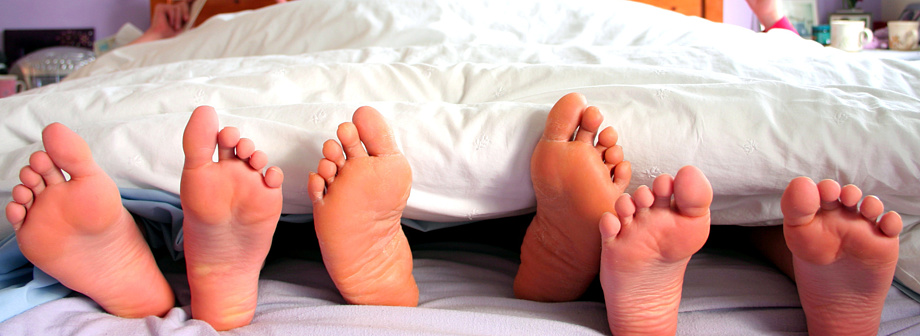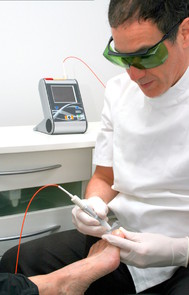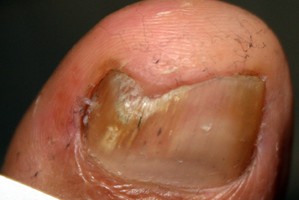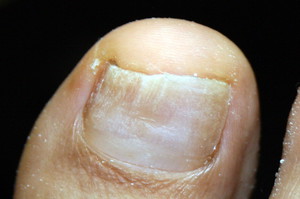
Laser Treatment for Fungal Nails
At Bushey Foot Clinic we use the latest in laser technology. Laser therapy has revolutionised the treatment of fungal nails and is an effective alternative to topical medications, which have a low success rate, and oral medicines, which often have unpleasant side effects.
Benefits of laser therapy include:
- No disagreeable side effects
- Anesthesia is not required
- Suitable for all ages
This is a safe and effective procedure for an unsightly and often embarrassing condition.
What is fungal nail disease?
Fungal nail infections (onychomycosis) are very common and can affect both fingernails and toenails. More men than women develop this and the chance of infection increases as we get older. In fact 50% of people over 70 have some form of fungal infection in their toenails.
Fungus can affect some or all of the toenails and gradually worsens over time. Fungus in the toenails can drastically affect the appearance of the nails with affected areas of the nail becoming thicker with a brownish discolouration. Fungal nails are more difficult to cut and the fungus will start to make the nails crumble. The toenails affected could also start to lift, which might mean that a bacterial infection could develop under the nails. Needless to say this condition is very embarrassing and will often cause people to hide their feet away. Traditionally treatments available have been lacquers applied directly to the nail. These often do not work, especially once infection has become established. An alternative option is to take oral medication which can cause side effects and induce potential liver complications.
How did I catch the fungus?
Our nails contain a protein called Keratin which the fungus feeds on. This, combined with warm moist conditions that our shoes provide makes a perfect environment for fungus to grow.
Some people appear to be more prone to fungal infections but everyone is at risk. Often the first sign of a fungal infection on the foot will be redness an itching of the skin, usually between the toes or small blisters in the arch of the foot. This fungal infection of the skin is known as Athlete’s Foot and is caused by the same fungus that causes nail fungal infections. Over time the infection can spread to the nails.
Walking in communal changing areas and sharing of towels can be factors in spreading the infection, but the spores that cause fungal infections can lay dormant on the skin waiting for the right conditions to grow.
How does the laser work?
The laser wavelength used to treat toenail fungus penetrates the nail, heating the nail bed and nail itself. The heat generated by the laser helps to destroy the fungus' ability to reproduce. As the nail grows out the fungus should grow out with it.
What does treatment involve?
The Podiatrist will take a medical history, your nails will be assessed and treatment will be discussed. Photographs will be taken of the relevant nails so that a comparison can be made as treatment progresses. The nails are cut and any thickening filed down.
The laser is passed over the nail several times, the nail will gradually warm up and heat might be felt. A cream will be applied that will help stop reinfection.
How many treatments will I need?
An improvement can usually be seen after only one treatment - however, for more severe infections, between 3-6 treatments may be required.




